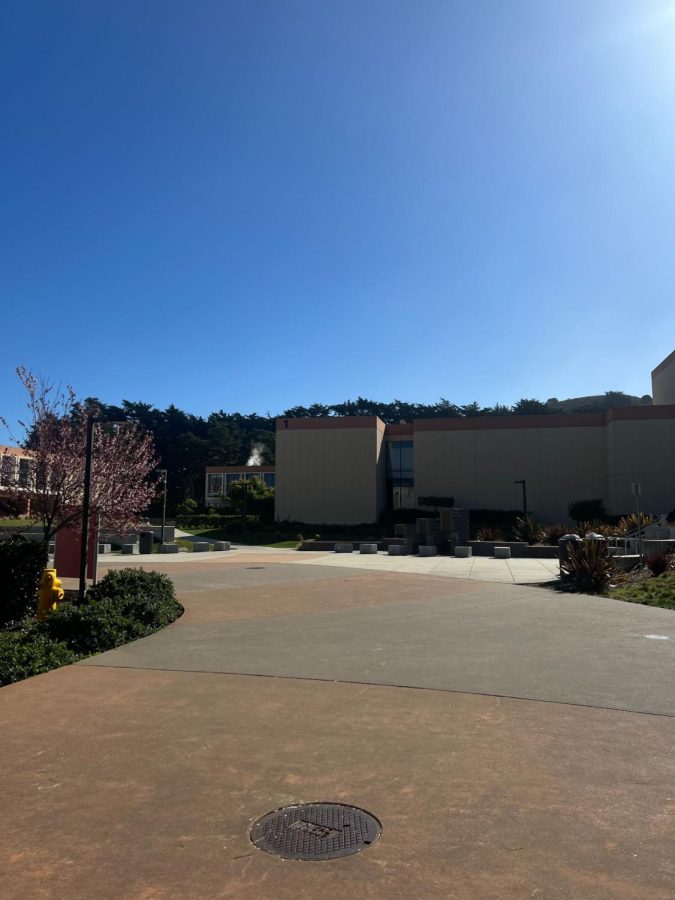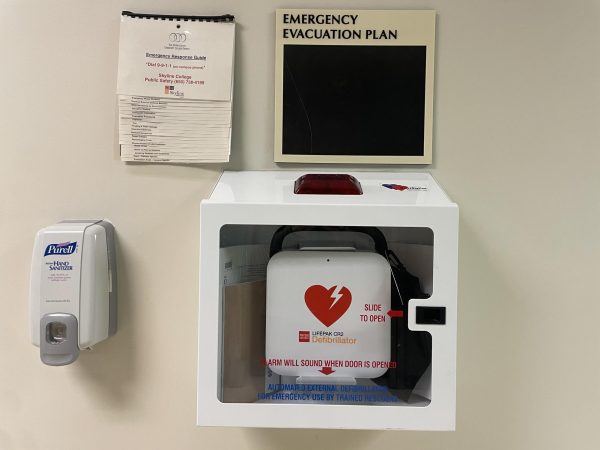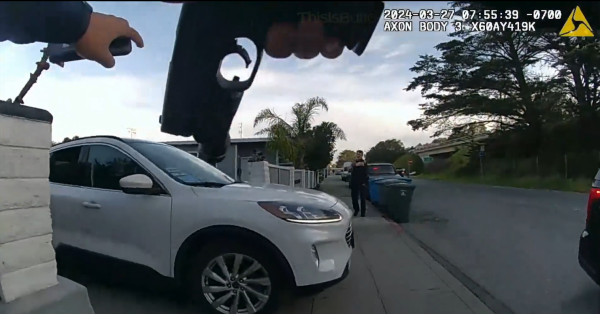Pricey Bay Area and declining mental health resources are driving down community college enrollment
Post-Pandemic Community College enrollment: why does it continue to fall?
The empty courtyard at Skyline College’s campus in San Bruno, CA at noon showcases declining enrollment.
Community college enrollment in the Bay Area is at an all time low because of poor affordability of public educational institutions and housing as well as a lack of mental health resources.
The pandemic derailed many lives almost instantly. Bay Area community colleges at large are still dealing with the ramifications of it and have seen a declining enrollment since, with 419,000 less students since the 2018-2019 school year to be exact.
One reason for this drop in enrollment is the affordability of our community colleges. For the current 2022-2023 school year, the average tuition for California Community Colleges was $1,246 per year for in-state students. This price does not include the cost of textbooks and other necessities, which can add hundreds of dollars to students’ budgets.
The San Mateo Community College District has tackled tuition fees, with Senate Bill 893 being signed by Governor Gavin Newsom in 2022. However, students are still responsible for paying for required textbooks and other material out of their own pocket.
Depending on availability, most textbooks can range anywhere from $30 to $100 or more. All together you’ll be spending at least a couple hundred dollars on textbooks alone per semester, which some students simply can’t afford.
Not only does the affordability of our community colleges affect enrollment, but the overall affordability of housing in the Bay Area plays a role. It’s estimated that people who live alone in cities such as San Francisco and San Jose need to make at least $60,000 a year to live comfortably, making it extremely difficult for a college student with a full-time minimum wage job to live on their own.
Students who can’t afford to live on their own typically live with their parents, while both attending school and working to support their families. The pressure to be a contributor while also getting a degree makes it less likely that they will continue to pursue academic goals. A lack of higher education will only complicate their ability to attain economic mobility in the future.
These factors certainly take a toll on students, eroding their mental health. Furthermore, the lack of mental health services and overall stigma around it heavily discourages students and people generally from seeking help. This can lead to students almost forcibly having to take a semester or two off from school to regroup for the health of their still-developing minds.
All of these obstacles combined together give a glimpse as to why Bay Area community colleges have seen a dip in enrollment. It’s hard to blame those who have decided to take a break or drop out completely as these past three years have caused unimaginable hardships for many across our communities, particularly lower-income and marginalized people.
State and local governments must step in and provide more funding to our schools and mental health resources if they wish to see a rise in enrollment in the future. If change doesn’t occur quickly, the future of both students and Community Colleges alike is destined to seem rather dark.














